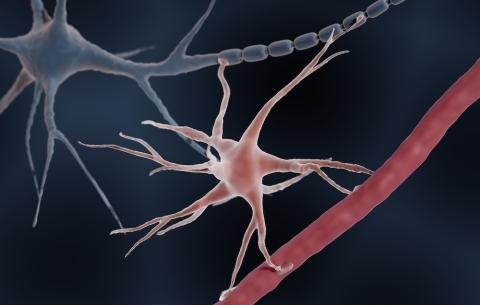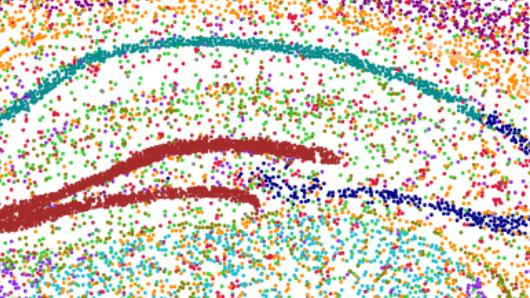Key details
Miscommunication between support cells in Parkinson's
Parkinson’s disease is the second most common neurodegenerative disorder. Understanding why cells die in this disease is still lacking and as such, current therapeutics only treat the symptoms. There is an urgent need to better understand what is going wrong in the disease so we can prevent the onset of symptoms and slow the progression of the disease.
The Mallach Lab investigates the understudied cells of the brain, support cells such as microglia, to decipher how miscommunication between them can drive the disease, and its onset, and how this can be corrected.
Latest news



Dr Anna Mallach
Dr Anna Mallach is an Emerging Leader at the UK DRI at Imperial. Find out more about her career and expertise on her profile page.

Research summary

The hippocampus, showing how different cells can be resolved spatially using novel spatial transcriptomic methods. Credit: Anna Mallach
Investigating microglial interactions driving neurodegeneration in Parkinson’s disease
Next to the well-characterised loss of dopaminergic neurons in Parkinson’s disease, the support cells of the brain, microglia and astrocytes, are also changed in the disease. From other diseases, such as Alzheimer’s disease, it is known that microglia play a very important role in communicating with neighbouring cells (Mallach et al., 2024), which can drive a toxic cascade leading to cell death. Less is known about the role of microglia in Parkinson’s disease, but risk genes linked to the disease, such as LRKK2, modify microglia function, suggesting that the cells play an important role in disease initiation or progression.
Dr Anna Mallach takes advantage of state-of-the-art techniques to understand microglial interactions with other cells in Parkinson’s disease and identify what changes in cellular interactions drive cell death. Anna aims to understand how the disease and symptoms develop to be able to target them earlier and more efficiently. To understand the key components of this crosstalk, the lab will use:
- Functional readouts using induced pluripotent stem cells modeling human brain cells
- Genetic pertubations working with known risk genes to assess how they disrupt cellular interactions
- Molecular analysis of cellular interactions in patients using bioinformatic analysis of big datasets, such as publicly available RNA sequencing datasets
Key publications
Vacancies
Lab members
- Craig Terris (PhD Student)
Collaborators






Lab funders
Thank you to all those who support the Mallach Lab!

